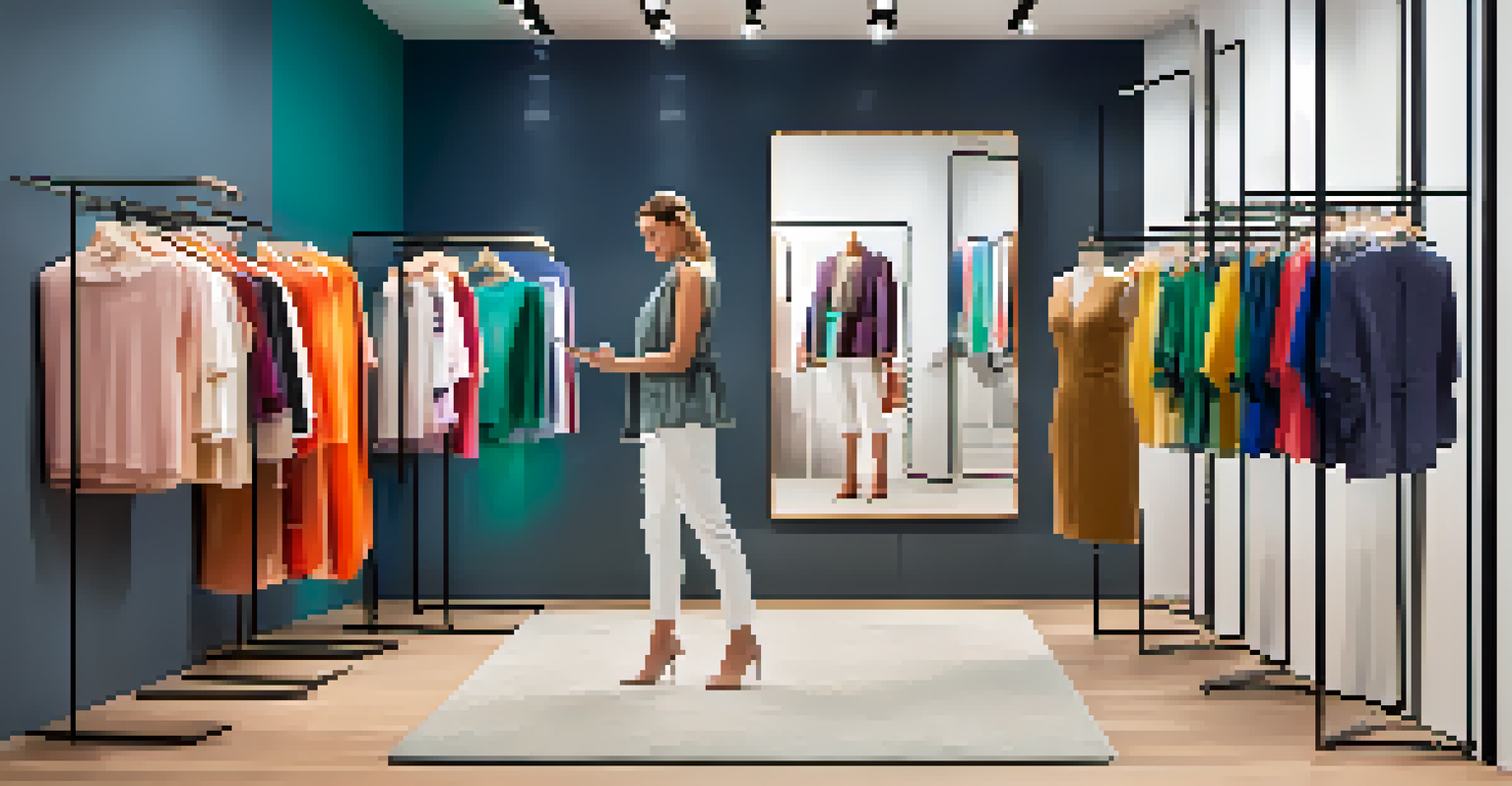Augmented Reality: Enhancing Online Shopping Experiences

What is Augmented Reality and Why It Matters
Augmented Reality (AR) is a technology that overlays digital information onto the real world. Imagine looking through your smartphone and seeing virtual furniture placed in your living room. This blend of virtual and physical environments can enhance our everyday experiences, especially in online shopping.
Augmented reality is not only a tool for entertainment; it has the potential to transform the way we shop online, creating immersive and personalized experiences that engage customers more effectively.
For shoppers, AR provides a new way to visualize products before making a purchase. Instead of relying solely on images or descriptions, consumers can interact with virtual items, making informed decisions. This not only boosts confidence but also reduces the likelihood of returns, benefitting both consumers and retailers.
As online shopping continues to grow, AR offers a unique competitive edge. Brands that embrace this technology can attract tech-savvy customers looking for innovative ways to shop, ultimately driving sales and customer loyalty.
How AR Enhances Product Visualization
One of the most significant advantages of AR in online shopping is its ability to enhance product visualization. For instance, clothing retailers can offer virtual fitting rooms, allowing customers to try on outfits digitally. This technology eliminates the guesswork involved in selecting sizes and styles.

Imagine trying on a pair of shoes or a dress without ever leaving your home. AR allows customers to see how products look and fit in real-time, making the shopping experience more interactive and enjoyable. This immersive approach can turn browsing into a fun activity rather than a chore.
AR Enhances Online Shopping Experience
Augmented Reality allows consumers to visualize products in their own environment, boosting confidence and reducing purchase anxiety.
Additionally, AR can help highlight product features that might not be easily conveyed through traditional images. For example, a customer could see how a tech gadget works or explore intricate details of a watch, enhancing their understanding and appreciation of the product.
Boosting Consumer Engagement with AR Features
AR isn't just about visualizing products; it's also about enhancing consumer engagement. Brands can create interactive experiences that captivate shoppers' attention. For example, a beauty brand might allow customers to virtually apply makeup shades before purchasing.
The future of shopping is not just about convenience; it's about creating meaningful connections through innovative technology like augmented reality.
Such interactive features create a memorable shopping experience, encouraging users to spend more time on the site. The more engaged consumers are, the more likely they are to make a purchase. This emotional connection can also lead to brand loyalty and repeat business.
Moreover, AR experiences can be shared on social media, broadening a brand's reach. When customers post their virtual try-ons or product experiences, they generate organic buzz, attracting more potential shoppers to the brand.
Reducing Purchase Anxiety with AR
Purchase anxiety is a common issue for online shoppers, stemming from the inability to physically inspect products. AR can significantly alleviate this concern by allowing customers to visualize products in their own environment. Seeing how an item looks in their space can provide reassurance and boost confidence in their buying decisions.
For example, furniture retailers like IKEA offer AR apps that let users place virtual furniture in their homes. This not only helps customers picture how a piece fits their space but also assists in color coordination and style matching.
Personalization Through AR Technology
AR enables brands to create tailored shopping experiences by utilizing customer data to offer personalized product recommendations.
By addressing the uncertainty that comes with online shopping, AR fosters a more positive shopping experience. This reduction in anxiety can lead to higher conversion rates and fewer abandoned carts, ultimately benefiting the retailer's bottom line.
The Role of AR in Personalized Shopping Experiences
Personalization is key to modern shopping, and AR plays a pivotal role in creating tailored experiences. With AR, brands can utilize customer data to offer personalized recommendations based on individual preferences and behaviors. For instance, a customer interested in outdoor gear might see AR displays of hiking equipment tailored to their interests.
This level of personalization not only enhances the shopping experience but also makes customers feel valued. When shoppers see products that resonate with their needs, they are more likely to engage and make a purchase.
Furthermore, personalized AR experiences can evolve over time, adapting to changes in consumer preferences. This ongoing engagement helps brands build lasting relationships with their customers.
Challenges and Considerations for Implementing AR
While the benefits of AR in online shopping are clear, there are challenges to consider. One major hurdle is the cost of implementing AR technology. For smaller retailers, the investment required for creating AR experiences can be daunting, potentially limiting their ability to compete.
Another challenge is ensuring that AR experiences run smoothly across various devices and platforms. A seamless experience is crucial to avoid frustrating potential customers. Brands must invest in testing and optimizing their AR applications to ensure compatibility.
Challenges in AR Implementation
Despite its benefits, the cost of AR technology and the need for consumer education present significant challenges for retailers.
Lastly, educating consumers about how to use AR tools can be essential for success. Some shoppers may be unfamiliar with AR technology, so providing clear instructions and support can help bridge the gap and encourage adoption.
The Future of AR in Online Retail
The future of AR in online retail looks bright, with continued advancements in technology. As AR becomes more accessible, we can expect more brands to adopt this innovative approach to enhance customer experiences. Imagine a world where shoppers can interact with products in real-time, no matter where they are!
Moreover, as AR technology evolves, we may see even more sophisticated applications, such as gesture recognition or voice commands. These advancements could further streamline the shopping process, making it easier for customers to find and purchase products.

Ultimately, the integration of AR in online shopping is expected to redefine how consumers interact with brands. By providing immersive, personalized experiences, AR can help foster deeper connections and drive the future of retail.